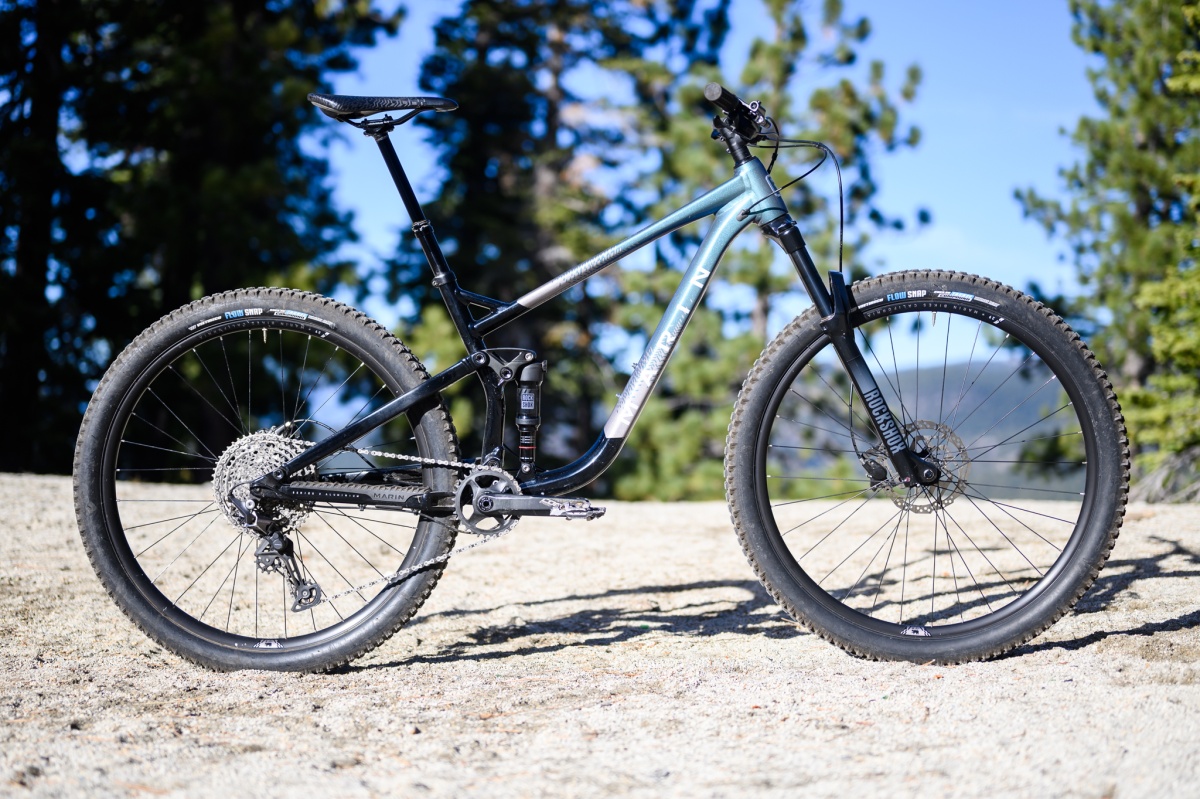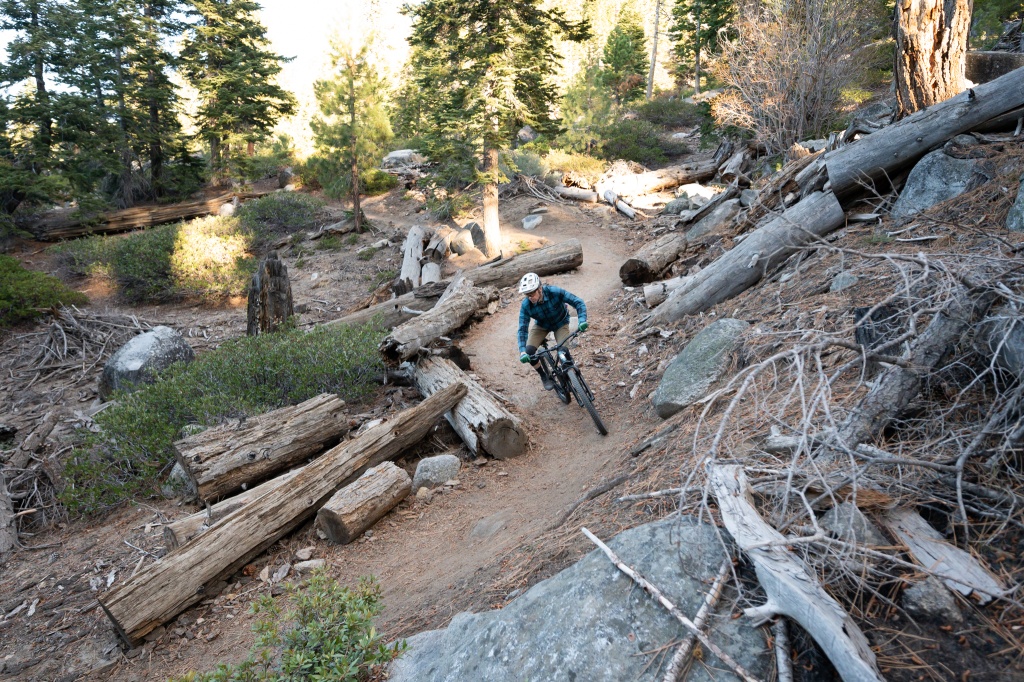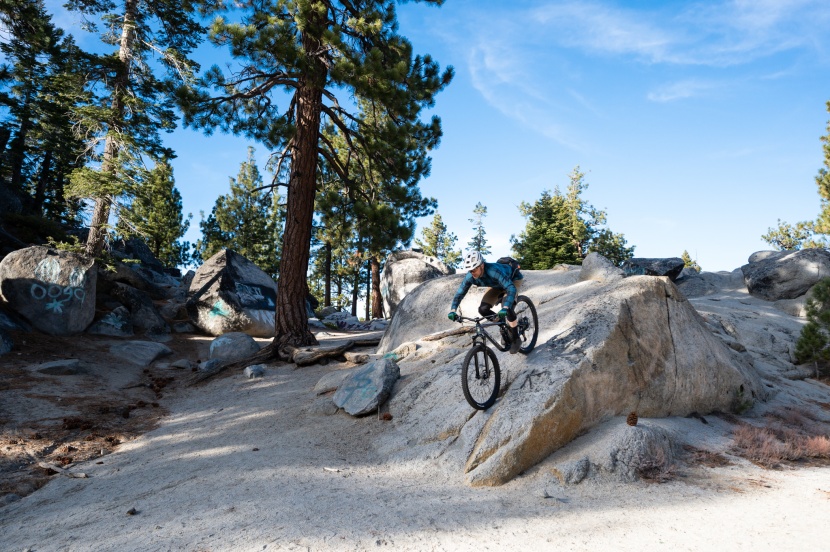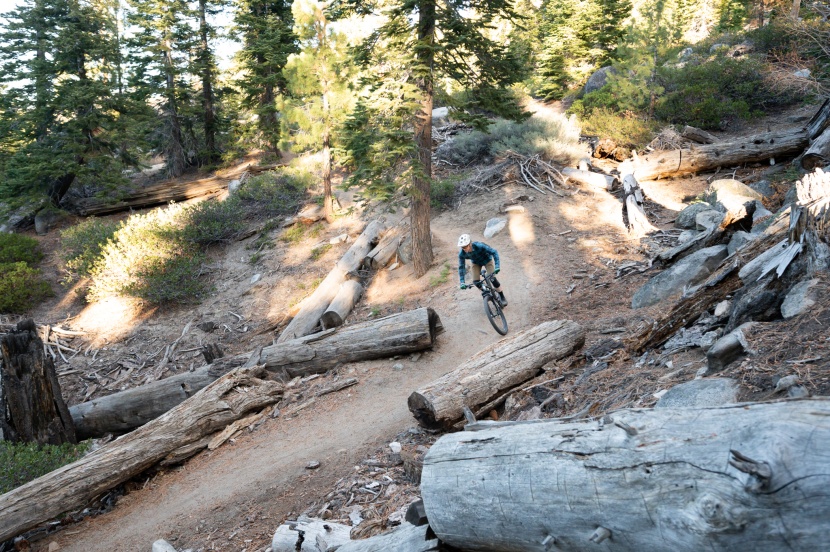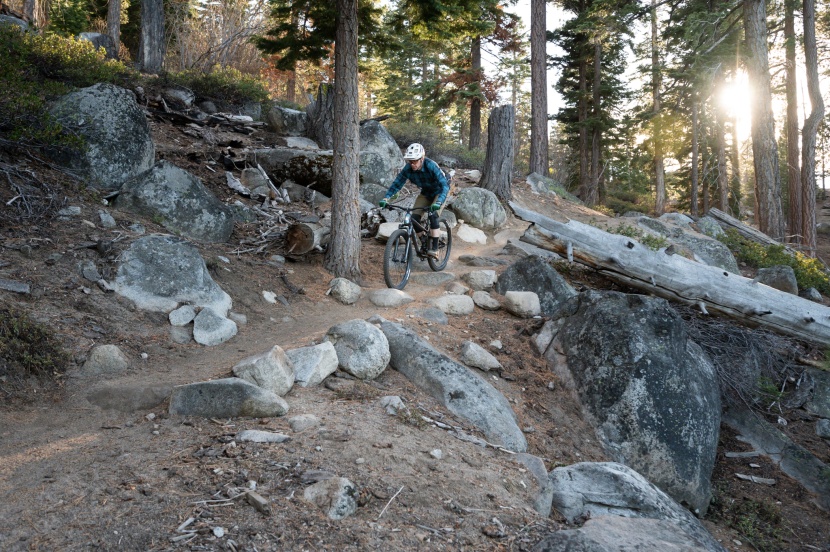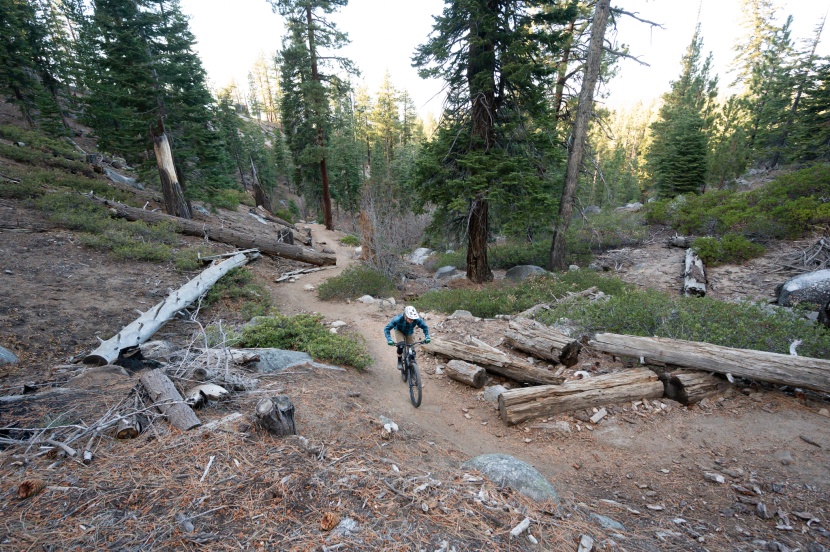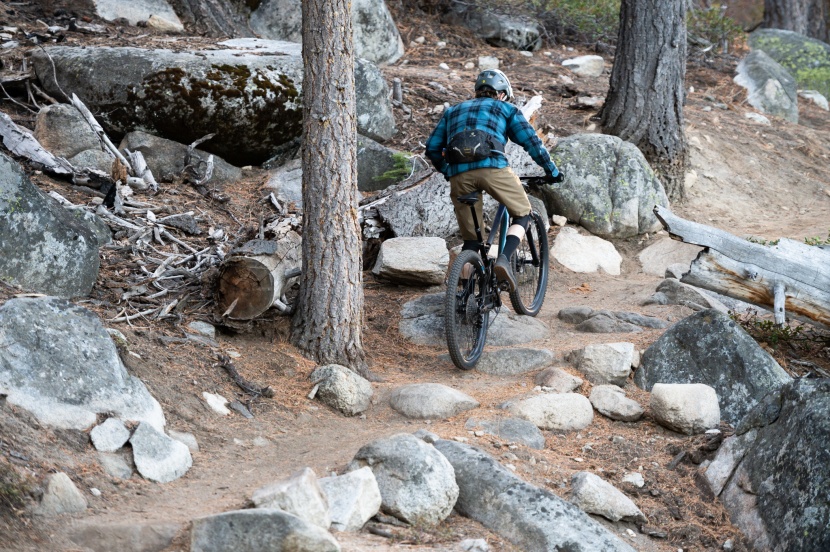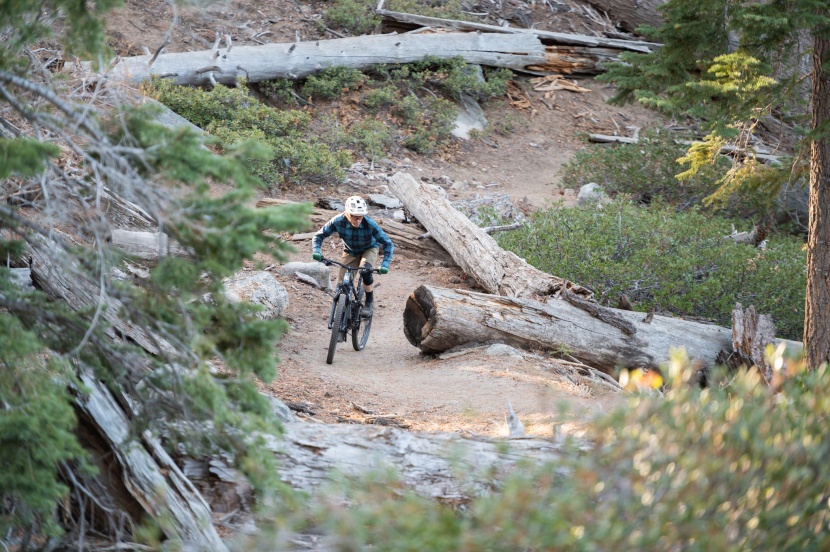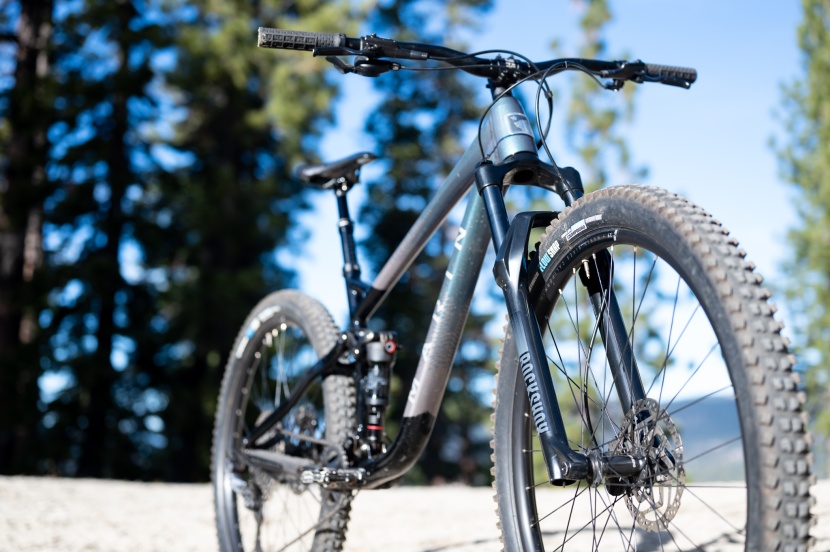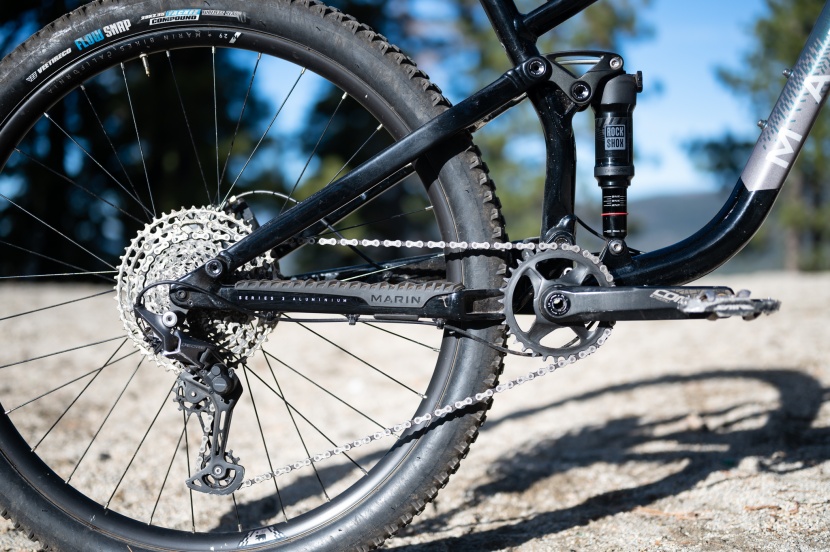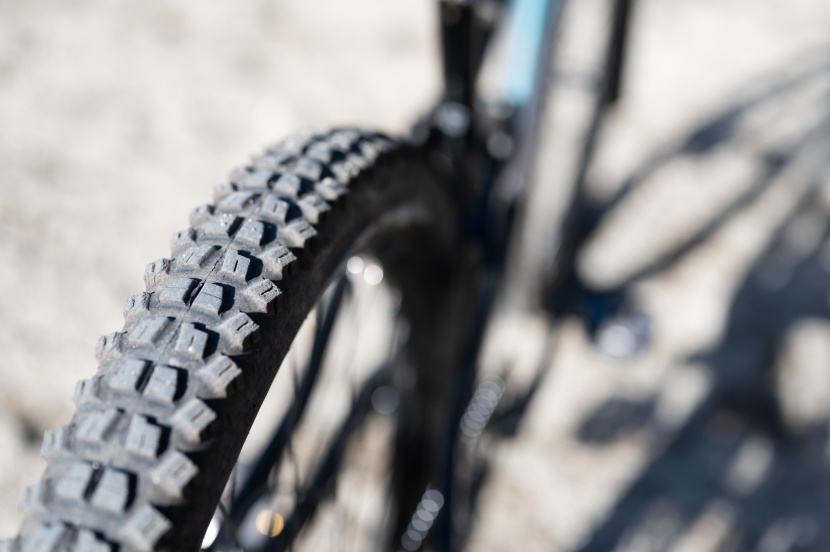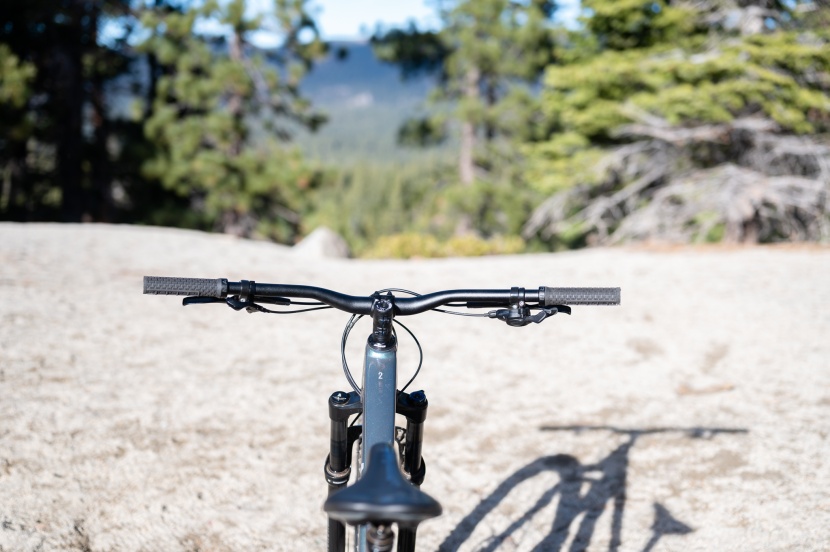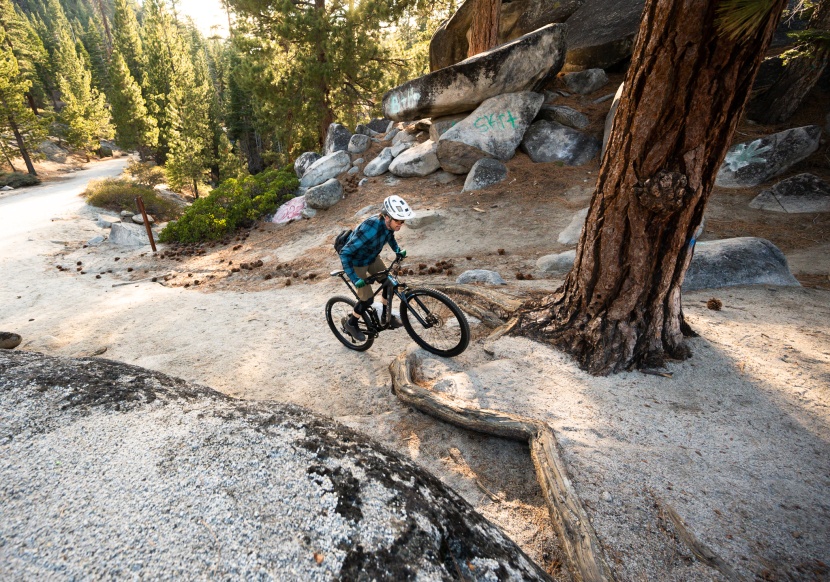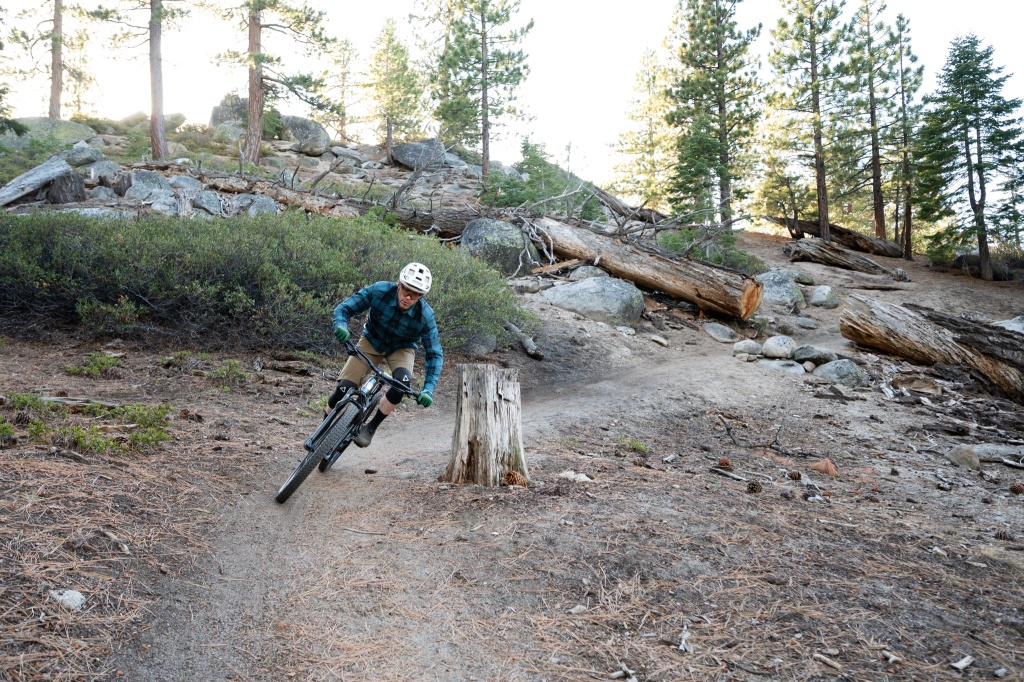Marin Rift Zone 29 2 Review
Our Verdict
Our Analysis and Test Results
Should I Buy This Bike?
The Rift Zone 29 2 makes sense for a huge number of riders and terrain. It may not be the lightest weight, fastest climber, or hardest charger, but it does virtually everything well and is loads of fun on a huge range of terrain and trail types. This bike's geometry is up to date, and it's capable of riding down just about anything and doing so pretty aggressively despite its modest 125mm of rear travel and 130mm fork. At the same time, the supportive rear suspension and short chainstays help to keep it feeling lively and playful when you want it to be. Its heavier weight does contribute to a bit of a lethargic feel on the uphills, but it is otherwise a comfortable, capable, and relatively efficient climber. We feel the Rift Zone 29 2 is a great option for the rider who isn't overly concerned with weight and wants one bike that does it all pretty darn well.
Fun Factor
Our testers had a blast riding the Rift Zone 29 2. We found it to be comfortable and easy to get along with right out of the gate, with no awkward getting to know you phase. This easy-going demeanor hides its shred-iness somewhat, as this bike undoubtedly punches above its price class and is ready, willing, and able to get after it as hard as you are on the descents. Despite its modest 125mm of rear-wheel travel, the Rift Zone's modern geometry lends itself to tackling more aggressive terrain than you might expect. At the same time, it maintains the liveliness and maneuverability that shorter travel bikes are known for.
The Rift Zone 29 2's versatility definitely helps to keep the fun factor high, as you can slash, pop, and play your way down the mountain, or dive into steeper, chunkier trails with confidence. That said, it doesn't require a high skill level to be a great time, and it felt equally at home cruising mellow trails at lower speeds. We feel that just about anyone could jump on this bike and have a great time. Thanks to its modern geometry and mostly dialed component specification, it's also the kind of bike that you can grow with as your skills progress. In our opinion, there's not much more fun than improving your skills on the mountain bike, and the Rift Zone won't hold you back.
Downhill Performance
The Rift Zone 29 2 is a hoot on the descents. We tested the more expensive Rift Zone Carbon previously, and this bike feels, not surprisingly, almost identical to its more expensive sibling on the downhills. This bike is impressively capable given its modest 125mm of rear-wheel travel. Its handling is intuitive and responsive, and it feels comfortable at a huge range of speeds and terrain. We pushed this bike as hard as we could, and it never protested or let us down. That said, it is somewhat limited by its shorter travel numbers when things get really rough and wild, which is to be expected.
Marin didn't hold back when they designed the Rift Zone 29 models, giving them a geometry that ticks all of the modern, progressive boxes. The 65.5-degree head tube angle is the sweet spot by today's trail bike standards but is relatively slack for a bike in this travel bracket. Combine that with a spacious 505mm reach (size large is 480mm) and a moderately long 1240mm wheelbase (size XL), and it's no wonder this bike exudes confidence in steep, rough terrain, and feels super stable at speed. It puts the rider between the wheels and provides a confident behind-the-front-wheel position for tackling more aggressive descents. This bike's length and head tube angle aren't the whole story, however, as the short-for-a-29er 425mm chainstays help to keep the rear end feeling sporty and quick. Despite its length, the Rift Zone remains easily maneuverable, and we found it to negotiate tight terrain and turns with ease, and almost begged to get on the rear wheel and pop off side hits while riding. Yes, this bike can be ridden aggressively in rough terrain, but it doesn't feel bland or boring on mellower trails or at lower speeds either.
The Rift Zone 29 2 has 125mm of rear-wheel travel paired with a 130mm fork. While seemingly quite simple, Marin's Multi-Trac suspension design performs well, and it's easy to be tricked into thinking this bike has a little more travel than it actually does. We found the suspension to feel supple off the top, supportive in the mid-stroke, and progressive enough to prevent harsh bottom-outs on bigger hits. The supportive mid-stroke provides something to push off when pumping or popping trail features, and it performed surprisingly well through high-frequency chop. While this bike may fall on the shorter end of the travel spectrum, we found it to be comfortable and capable of getting into some properly aggressive terrain. It is a shorter travel bike, however, so it does have limits, it just takes more than you'd expect to find them.
Climbing Performance
While the Rift Zone 29 2 is undoubtedly a comfortable and capable climber, it does suffer a little bit in this department due to its heavier weight. Beyond its weight, however, we found it to feel relatively efficient with responsive handling and excellent traction. As long as you're not racing to the top of the climbs, the Rift Zone has you covered.
Once again, the modern geometry of the Rift Zone 29 2 sets the rider up in a comfortable position for tackling the climbs. The effective seat tube angle of 76-degrees positions the rider right up above the bottom bracket for direct power transfer down into the pedals and an up top position that works well when scrambling up technical sections of trail. The reach is roomy, though it doesn't feel too stretched out thanks to the steep seat tube angle and riser bars. The moderately long wheelbase and relatively slack head tube angle don't detract from the bike's maneuverability, thanks in no small part to the bike's short chainstay length. This bike handles predictably, no matter the steepness of pitch or tightness of terrain. We did find it to feel a bit lethargic at times, though we could point directly to the bike's heavier weight as the cause.
The Rift Zone 29 2's 125mm of rear-wheel travel feels well-controlled while climbing. We found the pedaling platform to be surprisingly calm while seated pedaling, with little if any energy wasted through suspension movement. There was a little pedal bob while climbing out of the saddle, but not enough to make it feel inefficient. This is a good thing too, considering the rear shock doesn't have a compression damping/climb switch. While it would be a welcome feature for extended road climbs, we never felt like it was necessary while climbing on trail. Instead, we were happy to have the rear shock wide open and enjoyed the traction it provided. The meaty Flow Snap tires also helped with traction, though they are far from the fastest rolling.
Build
The Rift Zone 29 currently comes in 5 different build combinations including two higher-end carbon fiber framed options. The Rift Zone 29 2 we tested is one of three aluminum-framed models, falling in the middle of the three options in terms of price. All of the Rift Zone 29 models feature the same geometry and Multi-Trac suspension. Multi-Trac is a linkage-driven single-pivot design with the main pivot just above the bottom bracket, pivots on the seat stays just above the rear axle, and a rocker link attached about halfway up the seat tube that drives a vertically oriented rear shock. The 6061 aluminum frame has internal cable routing, molded chainstay protection, and room within the front triangle for a full-size water bottle. It comes in 4 sizes, S-XL
The Rift Zone 29 2 comes with a budget-conscious but functional RockShox suspension package. A Recon Silver RL fork controls the 130mm of front travel. This is far from our favorite fork, but it performed its duties admirably. It has Boost axle spacing, a 15mm thru-axle, an adjustable air spring, and compression and rebound adjustments. Marin chose a RockShox Deluxe Select R shock for the bike's 125mm of rear-wheel travel. This simple shock only has a rebound adjustment, and initially, we thought we'd miss having a compression damping/climb switch, but this bike works just fine without it.
A 12-speed Shimano Deore drivetrain provides plenty of range and crisp shifting. Yes, this drivetrain setup would be a little nicer with the Shimano Deore cranks, chainring, and chain, but honestly, it still works well enough with the FSA cranks and KMC chain. This bike comes with Shimano MT200 2-piston brakes with 180mm rotors front and rear. While these brakes undoubtedly get the job done, they aren't the most powerful, and the long throw levers take a little getting used to.
The Rift Zone 29 2 rolls on a set of Marin Double Wall Alloy rims laced to Shimano hubs. The wheels are tubeless-ready, as are the Vee Tire Flow Snap tires that are mounted to them. The wheels and tires come set up with tubes, however, but the rims are pre-taped, and setting them up tubeless only requires the purchase of some tubeless valve stems and sealant, an affordable and worthwhile upgrade. The Flow Snap tires are 2.35-inches wide and have a relatively aggressive tread that provides solid cornering, braking, and climbing traction. We've had bad luck with these tires in the past, but these seem to be more durable than our previous experiences.
Marin helps to keep the price of the Rift Zone 29 2 affordable by appointing the cockpit with a number of house-brand parts. It comes with a 780mm Marin Mini-Riser aluminum handlebar clamped to a short, 35mm alloy stem. This setup provides plenty of steering leverage for responsive handling. At the back of the bike, they've spec'd a 175mm (size XL) travel TranzX dropper seatpost. Medium and large frames come with 150mm and small comes with 125mm of travel. While the TranzX dropper doesn't turn any heads, we've never really had any problems with any that have come on test bikes, and the 175mm length is the appropriate size for the XL frame. The touchpoints of the bike consist of a Marin Speed Concept saddle, and Marin locking grips. While the saddle and grips work just fine, we found both to be a bit firm for our tastes.
Value
With the prices of bikes and bike parts skyrocketing, we love that Marin and a few other brands are doing their best to make shred-worthy bikes at reasonable prices. At its retail price, we feel the Rift Zone 29 2 is a solid value. This is a great option for the rider on a budget looking for a do-it-all trail bike that doesn't need any upgrades to get out on the trail and have a good time. If you're looking to take your riding to the next level, this is an affordable option to help you do it.
Conclusion
Whether you're new to the sport or upgrading to a full-suspension bike and you can't stomach the thought of spending upwards of $2,500 on a new bike, the Rift Zone 29 2 is a solid option to consider. This shorter travel trail bike has a modern geometry that gives it a high level of versatility and is surprisingly capable on the descents. It's a bit heavy, but it remains a comfortable and effective climber regardless. For the price, the build is pretty well sorted and ready for action out on the trails. We think Marin did a great job creating an affordable bike for taking your riding to the next level.
Other Versions
Marin makes the Rift Zone with both 29-inch (tested) and 27.5-inch wheels. There are three aluminum-framed models that mirror the 29-inch version in terms of price and build kit.
If the Rift Zone 29 2 we tested is a little too pricey, the Rift Zone 29 1 retails for around $400 less. It comes with a similar build, but it has a downgraded rear shock, an 11-speed Deore drivetrain, less aggressive tires, and it does not come with a dropper seatpost.
If you've got some wiggle room in the budget and you can spend a little more, the Rift Zone 29 3 will set you back around an additional $600, but it comes with some worthy upgrades. It has a 12-speed Shimano SLX drivetrain, upgraded suspension components, more powerful 4-piston brakes, and quality Maxxis Assegai tires.

